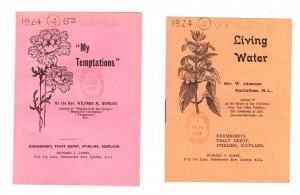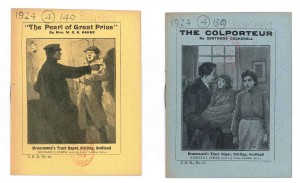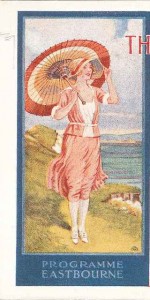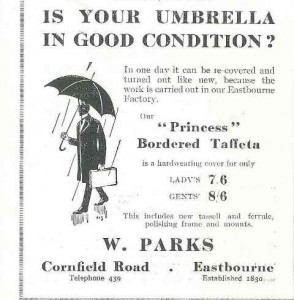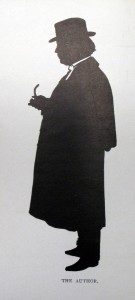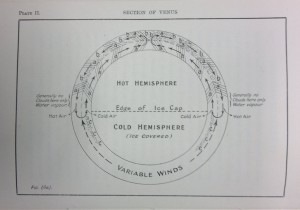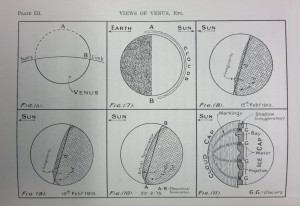What are you having for lunch today? A sandwich, by any chance? Ham or cheese, perhaps? How boring!
Recently I came across a handy little booklet published in 1924 by Country Life magazine and enticingly called Portable lunches [1924.7.2746]. The author begins by explaining how to make a sandwich properly; the ideal being that they can be “held in a gloved hand, without injuring the glove.” A messy sandwich is clearly anathema to the author: the bread should be evenly cut, with all slices exactly the same size in all respects; butter and fillings should be thinner at the edges so that they don’t squish out, but are still visible in the final article; completed sandwiches should immediately be carefully arranged on the serving dish, with a suitable garnish.
Neatness also applies to sandwiches intended for the traveller and these should be tightly packed in a flat oblong shape so as to be easily slipped into a pocket for carrying. This must be done in such a way that “those who carry a pocket luncheon know that they can with confidence open their packages and not present to the disgusted gaze of any who may be in their vicinity a mingled, mangled, messy mass.” Quite.
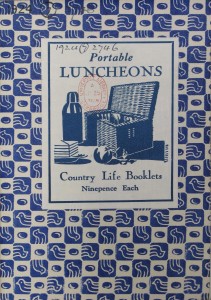 Now, there are seven varieties of sandwich, apparently: fish, meat, game, green, savoury, sweet and cheese. The meat for sandwiches should always be minced, we are told, never sliced as “the superiority of minced meat is unquestionably greater.” Sausages are the exception – these should merely be chopped into small pieces.
Now, there are seven varieties of sandwich, apparently: fish, meat, game, green, savoury, sweet and cheese. The meat for sandwiches should always be minced, we are told, never sliced as “the superiority of minced meat is unquestionably greater.” Sausages are the exception – these should merely be chopped into small pieces.
The idea of sweet sandwiches sounds a little strange, beyond the ubiquitous jam sandwich, or perhaps honey or lemon curd. However, how about glace cherries and candied peel whipped with cream into cream cheese? An inviting mixture, I read. For the healthy option, you could make green sandwiches instead, choosing your filling from sorrel, dandelions, peas or nasturtium leaves, for example. And, of course, where would we be without cucumber sandwiches? “Cut in diamonds and with half a radish placed in the middle of each, these invariably score a success.”
There are many suggestions for triple sandwiches, using a different filling for each layer. Recommended combinations include parsnip, mustard and cress with chestnut; liver, mushroom pickle and cold fried bacon fat; or cod’s roe, bacon and tomato pulp. Then again, perhaps you might fancy cheese, apple with vinegar and mustard and peas? Cheese with boiled chestnuts and pickled beetroot? Or, for the sweet toothed, Turkish delight, almonds and preserved ginger? The butter used for any of these creations may be coloured with the juice of beetroot or spinach, or grated lemon or orange peel to make your sandwich even more attractive.
To complete your portable lunch the author suggests cold tea, cold coffee or an unfermented drink such as still lemonade, together with something sweet like a sponge cake and also some fruit. Instructions are given regarding the packing of items such as bananas and oranges, which are best taken peeled to save space or, it is suggested, “A well-ripened lemon is appreciated by many as being particularly thirst-quenching, and indeed, superior to oranges in this respect.”
So, why not be a little more adventurous with your midday snack tomorrow?
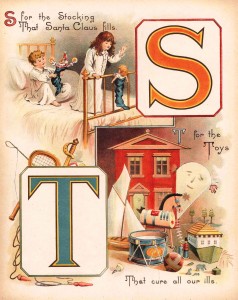 Well, this is it. Six years ago we were interviewing prospective staff, moving new furniture into the office, finding out just how cold the Library tower gets in winter. Six years have, as usual, flown by, and this month we’ve completed the project. We will continue to catalogue as much as possible until Christmas, but then we will all be moving on to other things. So this will be our last post for the Tower Project blog. We started it so that we could share something of the sense of discovery as we explored what was in the tower. I’ve been lucky to have colleagues working on the project with the intelligence, judgement and curiosity to relate to the material, people who had plenty to say about it. We’ve been lucky to have academics and researchers who’ve unreservedly shared their time and knowledge to support the project. What started as office conversations turned into blog posts, sparked wider conversations and fed into conferences, teaching materials, and of course more books. I can’t think of anything more representative of what a university should be about. So this is the time to say thankyou to all of you who have contributed to the blog, we’ve really enjoyed talking to you!
Well, this is it. Six years ago we were interviewing prospective staff, moving new furniture into the office, finding out just how cold the Library tower gets in winter. Six years have, as usual, flown by, and this month we’ve completed the project. We will continue to catalogue as much as possible until Christmas, but then we will all be moving on to other things. So this will be our last post for the Tower Project blog. We started it so that we could share something of the sense of discovery as we explored what was in the tower. I’ve been lucky to have colleagues working on the project with the intelligence, judgement and curiosity to relate to the material, people who had plenty to say about it. We’ve been lucky to have academics and researchers who’ve unreservedly shared their time and knowledge to support the project. What started as office conversations turned into blog posts, sparked wider conversations and fed into conferences, teaching materials, and of course more books. I can’t think of anything more representative of what a university should be about. So this is the time to say thankyou to all of you who have contributed to the blog, we’ve really enjoyed talking to you! 







